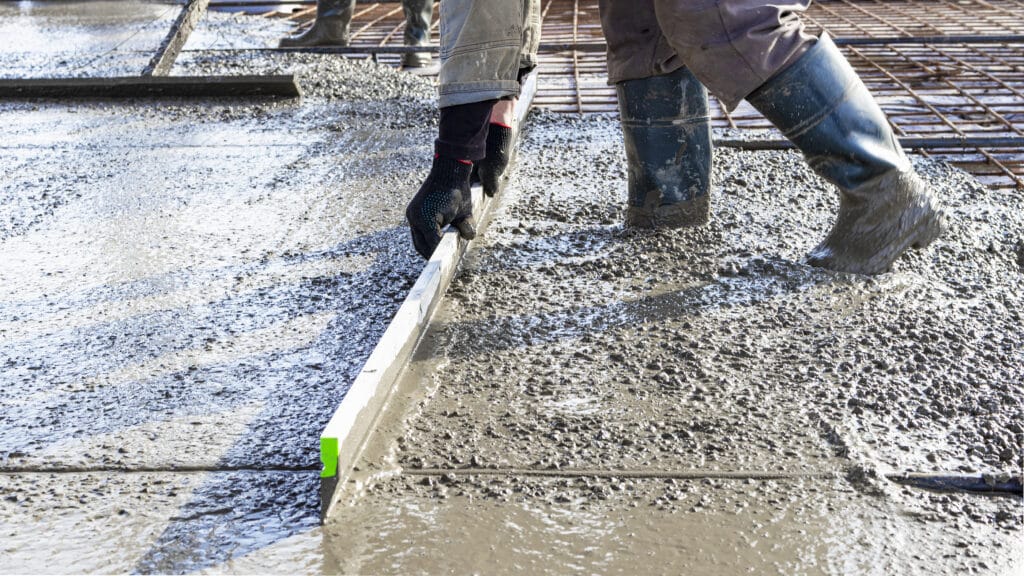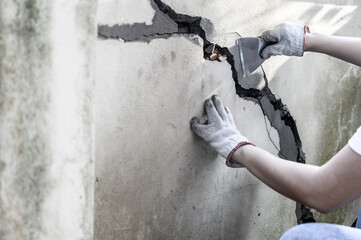Six Signs of Masonry Repair
Brick and stone structures need to be maintained properly. A masonry repair service ensures your building is structurally sound and safe for you and your family.
It’s important to address masonry issues early. Whether it’s a crack or efflorescence, an ounce of prevention is worth a pound of cure. For more information, just click the link https://concretecontractorcoloradosprings.com/ provided to proceed.

With masonry construction, brick chimneys, concrete basements, heavy-duty porches, and more are all possible. These structures are common in both commercial and residential settings. Unfortunately, they are susceptible to damage, such as cracking, over time. Masonry repair involves filling in these cracks to restore aesthetic and structural integrity.
A reputable masonry repair service will first determine the reason behind a crack. It may be a sign that the original materials are failing or that other building areas are undergoing stress. This information will determine the correct repair strategy.
When repairing mortar cracks, cleaning the area and removing any loose material with a wire brush or power trowel is important. This can help prevent further damage to the surface and ensure the patching materials bond properly. Next, the mason will mix up a batch of mortar that matches the surrounding brickwork to make the repair seamless.
The cracks will then be filled with a grout bag, narrow trowel, or wood stick. This should be done slowly and carefully to avoid further damaging the surface or causing the crack to widen. Once the mortar has been set, it can be sculpted to match the surrounding joints to make the repair completely invisible.
Masonry repairs can also involve removing efflorescence, a powdery substance that appears on brick or stone surfaces. It is caused by moisture penetrating the masonry and expanding. Whether indoor or outdoor, this must be removed with care. This is because muriatic acid is used to do so, and it can be incredibly dangerous.
Masonry repairs can also include the installation of brick stitching bars to stabilize brick walls that are actively cracking. However, this should only be done in conjunction with a full structural engineer’s repair specification that addresses the source of the wall movement.
Masonry is incredibly durable but can suffer from wear and tear over time. If you see signs of masonry damage, hiring a professional mason to address the issue immediately is essential. Otherwise, the structure could risk crumbling or losing integrity, a serious safety hazard.
Stains and discoloration on brick walls are the most common signs of masonry damage. These are typically caused by efflorescence or water-soluble white salts that build up in the masonry over time. Professional masonry repair contractors can remove these deposits and restore the surface of your brick wall.
Staining masonry can also conceal cracks, spalling, and other imperfections. It can also help match renovations, additions, or repairs to existing masonry structures.
Proper masonry staining will prevent moisture from building up and damaging the masonry. A proven masonry stain will penetrate deep into the brick to protect it from moisture while allowing it to breathe. It will also be less likely to chip or peel like paint.
A good masonry staining company will use products that have undergone accelerated testing backed by a transferable product warranty. Avoid companies that use off-the-shelf paints or ancient technology, as they may leave you high and dry if there’s a problem with the product.
To stain a brick or stone surface:
- Start by brushing on the bed (horizontal) mortar joints with one smooth, continuous stroke.
- Stain the head (vertical) joints that connect the rows of mortar.
- Stain each row of mortar in four to five bricks, then stain the next three to four rows above or below it.
- Touch up any spots that you missed.
Spalling is the breaking up of surface mortar in brick or stone structures. This can appear as loose bricks, mortar, or cracks in a masonry structure that look blown open. This is usually a symptom of a bigger issue that needs to be addressed, like water damage or structural instability. It’s important to fix the root cause of a problem rather than just treating the symptoms, or you could spend more money in the future.
Masonry repair specialists can repair many problems in brick and stone surfaces. They can repoint deteriorated mortar joints, replace damaged bricks and stones, repair and restore shelf angles and lintels, and install horizontal and vertical expansion joints to allow movement in masonry walls. They can also repair cracks and apply penetrating water-repellent sealers to prevent moisture penetration that can contribute to the deterioration of the masonry facade.
The right masonry repair materials depend on the needed repairs, but mortar is a common solution for repairing cracked or damaged bricks. Mortar combines sand, water, and cement to fill cracks between bricks or stones. It can be mixed by hand or with a power trowel, and it’s easy to use. Just wear a dust mask if you’re mixing mortar on site.
A homeowner can repair masonry, but hiring a professional for larger-scale or structural work is best. A masonry repair pro can help ensure the work is done properly and will last for years. Some masonry experts specialize in specific structures, like chimneys and fireplaces, but many can handle all kinds of masonry issues.
A common brick wall problem is water penetration. All masonry materials, including brick, are porous and susceptible to water infiltration. When moisture enters a masonry structure, it can lead to mold, mildew, and structural damage. This is why a masonry repair specialist often needs to diagnose and address masonry leaks.
Depending on the type of brick and mortar used in a building’s construction, there are various methods for addressing brick leaks. One common way is to repoint the brick. This involves removing old mortar from the deteriorated joints and replacing it with new mortar. However, this process must be done correctly to prevent further masonry damage.
Another method of preventing leaks in brick walls is to use water-repellant treatments. These products are available in various forms; some can be applied to surfaces in a spray application. Spraying from the bottom of the wall to the top will ensure an even soaking without causing unnecessary damage to bricks and other surface material.
A major sign that a masonry wall is leaking is a noticeable stain. Water stains on brick walls are most often caused by a build-up of salts in efflorescence, a crystalline deposit that appears white or grayish on brick surfaces. It is also important to remember that a masonry structure’s water-resistant barrier can be eroded by accumulating dirt and other debris against or at its base.
Leaks in a brick wall are most likely to occur at the joints. Inconsistent pointing and poor construction can result in the formation of leaks. This can be due to under or over-mixing the mortar ingredients, failing to properly fill all gaps between bricks, or needing more attention during construction.
Masonry construction is durable and long-lasting, but natural wear and tear and changes in the earth can cause it to require some amount of maintenance. Seeing a few signs of damage can mean the difference between an easy fix and a costly repair bill. Keeping an eye on six common signs of masonry problems can ensure you’ll be prepared to take action when needed.
Moisture damage is a common issue with masonry structures. If you notice a brick wall or chimney showing signs of water damage, it is important to have a professional mason take a look. They can determine if the issue is caused by water penetration or a plumbing leak and work to prevent it from spreading. They may also use a special material to plug up the affected area, such as mortar, which can help prevent moisture damage in the future.
A masonry expert can repair or replace damaged bricks, stones, and concrete. The simplest form of masonry repair involves replacing crumbling or damaged bricks with new ones to maintain the structure’s integrity and appearance. However, repairing or restoring larger sections of the structure may require them to dig up and remove the old materials before replacing them with new ones.
Other masonry repairs include the repointing of deteriorating mortar joints, replacement of cracked or distressed brick, shelf angle and lintel replacement/restoration, and cleaning and preservation of masonry facades. Masons can also install horizontal and vertical expansion joints to allow for movement in masonry walls and repair through wall flashing. They can even restore a fireplace or chimney to its original condition, including repointing flues and efflorescence removal.

